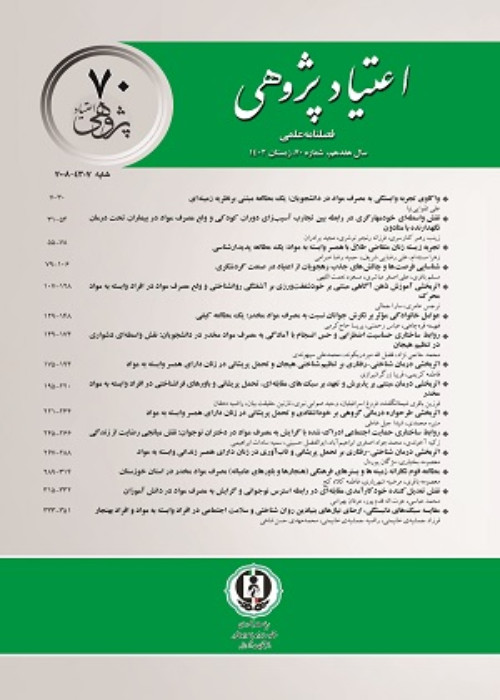investigate the fitness of Iranian adolescents' risk-taking model in addiction with emphasis on family functioning and maladaptive schemas, distress tolerance and emotion regulation .
The study aim was to investigate the fitness of Iranian adolescents' risk-taking model in addiction with emphasis on family functioning and maladaptive schemas, distress tolerance and emotion regulation among Qom students.
The research method was descriptive-correlational of structural equations. The study population consisted of all adolescents who were studying in the second high schools of Qom city in 1396-97 that 322 subjects were selected by cluster random sampling. Questionnaires included: Simmons & Gaher distress tolerance Questionnaire (2005), Grenfski and et al. Emotion Regulation Questionnaire (2001), Epstein and et al. Family Functioning Questionnaire (1995), Young's Early Maladaptive Schema Questionnaire (1994) and Weed and et al. Addiction Acceptance Scale (1992); Structural equation statistical test and LISREL were used to test the hypotheses.
The results showed that family function had significant effect on addiction risk and there was a significant relationship between family function and addiction risk. The results also showed that family functioning has an indirect and significant effect on the risk of addiction through emotional regulation and distress tolerance. In addition, the results of the present study showed that early maladaptive schemas have significant and significant effect on addiction risk. Also, maladaptive schemas have an indirect and significant effect on the risk of addiction through emotion regulation but, early maladaptive schemas do not have an impact on the risk of addiction due to distress tolerance. In addition, according to the results of the present study, distress tolerance and emotional regulation have a significant and direct effect on the risk of addiction. In general, four variables were able to explain the risk factor for addiction in adolescents.
In this study, identifying a number of psychological variables affecting students' tendency to drug addiction, it is necessary to pay more attention to mental health of students and formulate preventive and therapeutic programs in this field to reduce the prevalence of addiction and to eliminate its deleterious effects.
- حق عضویت دریافتی صرف حمایت از نشریات عضو و نگهداری، تکمیل و توسعه مگیران میشود.
- پرداخت حق اشتراک و دانلود مقالات اجازه بازنشر آن در سایر رسانههای چاپی و دیجیتال را به کاربر نمیدهد.



